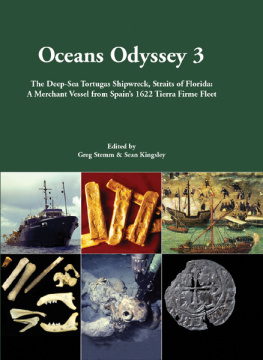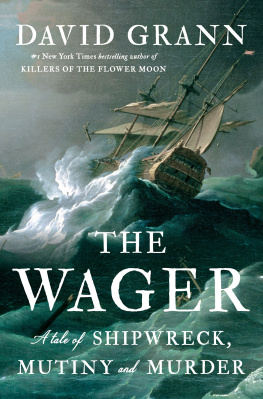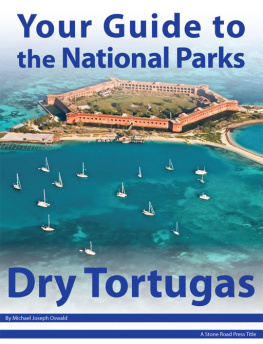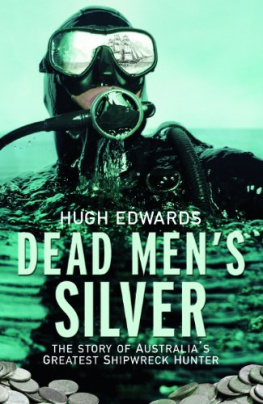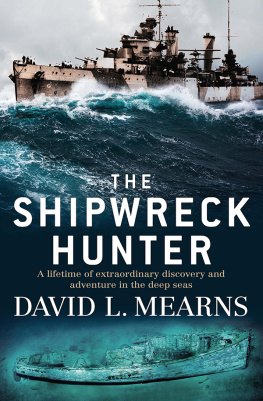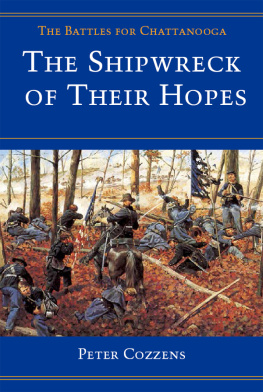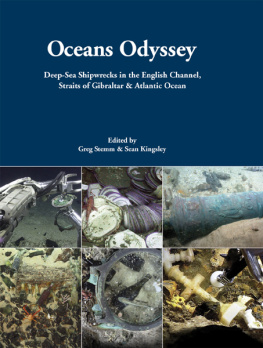This book is dedicated to some very special guiding lights, whose personal friendship and support of the Odyssey family will never be forgotten.
Ina and Sam Gross, David Bederman, George Becker, Phil Carroll, Bill Krusen and Corky Kaechele will always be remembered for their unwavering commitment and encouragement of our mission to push the boundaries of exploration and to share that knowledge with the world.

Published by
Oxbow Books, Oxford, UK
Oxbow Books and Odyssey Marine Exploration, 2013
ISBN 978-1-78297-148-1
EPUB ISBN: 978-1-78297-149-8
PRC ISBN: 978-1-78297-150-4
This book is available direct from:
Oxbow Books, Oxford, UK
(Phone: 01865-241249; Fax: 01865-794449)
and
The David Brown Book Company
PO Box 511, Oakville, CT 06779, USA
(Phone: 860-945-9329; Fax: 860-945-9468)
or from our website
www.oxbowbooks.com
A CIP record for this book is available from the British library
Library of Congress Cataloging-in-Publication Data
Oceans Odyssey 3 : the deep-sea Tortugas shipwreck, Straits of Florida : a merchant
vessel from Spain's 1622 Tierra Firme fleet / edited by Greg Stemm & Sean Kingsley.
pages cm. -- (Odyssey marine exploration reports ; 3)
Includes bibliographical references.
ISBN 978-1-78297-148-1
1. Buen Jess y Nuestra Seora del Rosario (Ship : Carrack) 2. Shipwrecks--Florida-
Dry Tortugas Region. 3. Underwater archaeology--Florida--Dry Tortugas Region.
4. Excavations (Archaeology)--Florida--Dry Tortugas Region. 5. Florida--Antiquities. I.
Stemm, Greg. II. Kingsley, Sean A. III. Odyssey Marine Exploration (Firm)
VK1273.F6O35 2013
910.9163'64--dc23
2013003214
Printed and bound in
Wales by Gomer Press
Preface
I know of no other field where funds have been set aside to bribe scholars to publish their projects, nor any discipline that has field reports a half-century old still waiting to be written. Most scholarly fields complain about the lack of adequate publishing outlets. In archaeology, it is the reverse. There are plenty of outlets but not enough finished works.
Mitch Allen, Field Guide to Archaeological Publishing,
SAA Archaeological Record 3.1 (2003), 5.
*
During the last decade a tsunami of new data, research and issues have surfaced that have changed the face of underwater archaeology. High profile shipwreck discoveries, a disappearance of funding for underwater cultural heritage management and the UNESCO Convention on the Protection of the Underwater Cultural Heritage have all caused much soul-searching, particularly concerning the umbilical cord linking project design, fieldwork, funding and public outreach. The cooperative and conflicting interests of all the various stakeholders in shipwrecks are in the spotlight now more than ever.
As much as everyone with a passion for underwater archaeology loves the thrill of the dig, for the scientist and society at large the publication of an archaeological project and dissemination of the data generated from the site should be the ultimate end goal. Archaeological excavation is destructive, no matter who undertakes it and publication should ideally enable a site to be reconstructed and reinterpreted any time in the future based on the written record (supported by graphics). Odyssey Marine Exploration has strived to honor these commitments to science in our work. Our philosophy is to share our results in scientific form swiftly, accurately and in a palatable way that will hopefully delight as well as inform.
The anxiety of whether to publish and be damned a psychological condition highly familiar to Odysseys scientists has exposed myriad skeletons in the disciplines cupboard. But has it resulted in a new wave of improved standards?
In the United Kingdom, From The Ground Up. The Publication of Archaeological Projects (Jones et al., 2001), commissioned from the Council for British Archaeology by English Heritage, Cadw, Dchas, Historic Scotland and the Northern Ireland Environment & Heritage Service, revealed widespread dissatisfaction with the state of archaeological publishing practices, primarily:
- With the structure of reports, and diversity of opinion about the purposes of writing them;
- Burgeoning grey literature, inadequate synthesis, delay in the appearance of summaries of new work, and imbalances in reporting, are all held to be militating against the current use of much of what is being produced;
- Inadequacies in provision for editorial support and training, standards of preparation, consistency in procedures, and capacity for prompt production;
- The absence of any single template for archaeological publication, which might be suited to all branches of the discipline in all parts of the United Kingdom and Ireland.

Fig. 1. Interpretive graphic panel at the Museum of the History of Science, Oxford, for the 2010 display of the worlds earliest wooden folding rule found on a shipwreck. Discovered by Odyssey Marine Exploration in the Western Approaches to the English Channel on site 35F, an English merchant vessel of c. 1672-85 involved in trade with West Africa.
Grey literature, in particular, was singled out as a genre that was neither being read by those who might find some of it useful, nor appreciated by those who produced or used it. While fieldwork publications in monographs and journals were consulted frequently by around one-third of the professional archaeologists surveyed, only 22% regularly consulted grey literature fieldwork publications and 17% never consulted them. Only 15.6% stated positively that they utilized grey literature in their own research.
When English Heritage assumed the role of managing UK underwater cultural heritage in 2002, the situation was arguably even worse within maritime archaeology. Taking to the Water: English Heritages Initial Policy for the Management of Maritime Archaeology in England determined that Over the last twenty-five years many licenses have been issued for survey and excavation work within areas designated under the Protection of Wrecks Act. Few of the licenses issued required the academic reporting of fieldwork results and, as the vast majority of this work took place on a voluntary basis, lacking adequate financial support for subsequent analysis and dissemination of the results, very little of this work has been formally published (Roberts and Trow, 2002: 25).

Fig. 2. A display of the photomosaic of the wreck of the side-wheel steamer the Republic (sunk 1865, 150km off south-east USA) in Odysseys traveling exhibition, SHIPWRECK! Pirates & Treasure. This interactive, multi-media exhibit featuring over 500 artifacts recovered from Odysseys worldwide deep-sea shipwreck expeditions has traveled across the USA since 2005.
Few robust preliminary articles and fewer final reports have reported on UK Protected Wrecks (the rare exceptions being the Mary Rose and the Invincible, both of which had unusually strong private-sector support: Jones, 2003; Marsden, 2003; Bingeman, 2010). Before such work can appear, understandably often disparate old archives need to be synthesized, understood and interpreted. As was obligatory for the current Tortugas shipwreck project, which we undertook two decades ago, most UK Protected Wrecks need to be subjected to re-excavation of the excavation (whether just a survey or a full excavation took place) to make sense of the primary data, and drag the whole body of recorded information into the modern digital age, before publication can be considered.
Next page
